
Login Into Your Account

Reset Password
Law enforcement Technology,Law enforcement Agency,Policing Technology,Smart Policing India,Homeland Security India,Border Security India,Border Management India,Cyber Crime news,Cyber Security news,Safety App,Public Safety App,Security App,Women Safety App,Police Initiative,Surveillance news,National Security news,isc event 2016,isc event 2017,scada event 2016,scada event 2017,Critical infrastructure security event 2016,Critical infrastructure security event 2017,iot summit 2016,iot summit 2017,Internet of things seminar 2016,Internet of things seminar 2017,iot seminar delhi 2016,iot seminar delhi 2017,iot conference delhi 2016,iot conference delhi 2017,top security event,security event,security event 2016,security event 2017,security conference 2016,security conference 2017,cso summit 2016,cso summit 2017,Corporate security event,Corporate security conference,security research india,homeland security research india,security think tank india
Law enforcement Technology,Law enforcement Agency,Policing Technology,Smart Policing India,Homeland Security India,Border Security India,Border Management India,Cyber Crime news,Cyber Security news,Safety App,Public Safety App,Security App,Women Safety App,Police Initiative,Surveillance news,National Security news,isc event 2016,isc event 2017,scada event 2016,scada event 2017,Critical infrastructure security event 2016,Critical infrastructure security event 2017,iot summit 2016,iot summit 2017,Internet of things seminar 2016,Internet of things seminar 2017,iot seminar delhi 2016,iot seminar delhi 2017,iot conference delhi 2016,iot conference delhi 2017,top security event,security event,security event 2016,security event 2017,security conference 2016,security conference 2017,cso summit 2016,cso summit 2017,Corporate security event,Corporate security conference,security research india,homeland security research india,security think tank india

How to assess your organisation’s cyber security resilience
Many are now wondering if their cyber resilience policies and procedures are effective enough in a global environment where attacks are more complex than ever. Directors also question how they will respond after an attack to lessen the financial and reputational impact on their organisations.
When creating a cyber security strategy, it’s important to establish a common language so everyone understands the technical issues being discussed.
Cyber security is a term often used synonymously with information security and business continuity and is generally seen purely as an information technology issue rather than a corporate risk issue. The truth is it is both.
The diagram below provides an easy way to understand the relationship between cyber security, information and risk management and how information technology management and business continuity also support security risks.
The Rise of 'Data and Analytics' Roles Points to Digital Business Transformation
More from Gartner
So, what questions do company directors need to ask when assessing their organisation’s cyber resilience?
The following questions are a starting point recommended in a report by the body responsible for company regulation the Australian Securities and Investments Commission (ASIC).
Are cyber risks an integral part of the organisation’s risk management framework?
How often is the cyber resilience program reviewed at the board level?
What risk is posed by cyber threats to the organisation’s business?
Does the board need further expertise to understand the risk?
How can cyber risk be monitored and what escalation triggers should be adopted?
What is the people strategy around cybersecurity?
What is in place to protect critical information assets?
What needs to occur in the event of a breach?
Many boards will find that management can only partially answer the above questions. To address this problem a range of cyber security frameworks have been developed to assist with the communication between the board and management and to focus discussion only on areas which need attention.
Is your organisation cyber resilient?
Several different frameworks are available to assist management address this question. All the reputable frameworks have similar elements and give similar outcomes if applied correctly, however some are more expensive and complex than others to implement.
In Australia, a commonly used framework is ISO 27000 which is an international standard against which organisations can be certified as compliant. Certification is a costly process and does not necessarily improve outcomes so many organisations will use this framework but not become certified.
However, one of the most commonly used frameworks internationally is the Cyber Security Framework (CSF) developed by the US National Institute of Standards and Technology (NIST). This framework is free and can be downloaded and used by any organisation.
The framework complements, and does not replace, an organisation’s risk management process and cybersecurity program. The organisation can use its current processes and leverage the framework to identify opportunities to strengthen and communicate its management of cybersecurity risk while aligning with industry practices.
Additionally, the US Computer Security Response Team (US-CERT) which is part of Department of Home Security (DHS) has developed freely available tools to help implement CSF using the NIST controls defined in their publication Security and Privacy Controls for Federal Information Systems and Organizations.
The easiest tool to get started with is the Cyber Resilience Review (CRR) tool. This tool is a pdf document which provides an assessment that is designed to measure existing organisational resilience as well as provide a gap analysis for improvement based on recognised best practices.
Proposed laws could take IT procurement decisions away from telcos
A more comprehensive tool is the Industrial Control Systems Cyber Emergency Response Team (ICS-CERT), which is also part of DHS. They offer a tool called Cyber Security Evaluation Tool (CSET), which is also free and can be downloaded on to a personal computer and will do a more comprehensive assessment.
The main benefit of CSET over CRR is that CSET allows assessment reports to be compared, so organisations can track progress over time as improvements are made to their security posture. However, for those organisations that have not done this type of assessment before CRR is the recommended starting point.
Although management must ultimately perform these assessments, the implementation of the frameworks can take a significant effort and be distraction for business. Therefore it is worth considering if a consultant should be engaged to assist in the first cut implementation and initial board presentations.
One thing you can be sure of is that at some point in the future every organisation must do some type of cyber security assessment so you may as well start now.
Ian Brightwell is principal consultant at DH4. He was previously director of information technology and CIO at the NSW Electoral Commission.
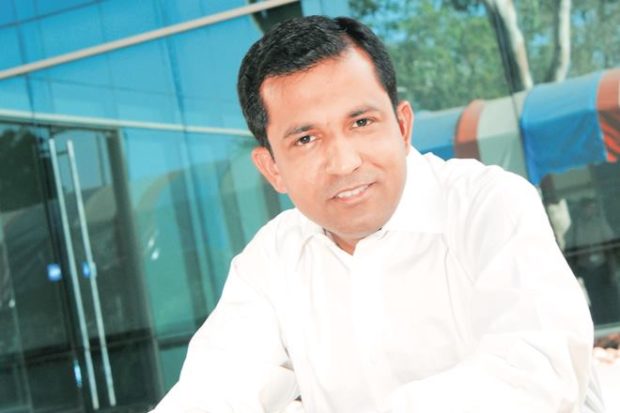
Internet of Things: How Gaia Smart Cities is using IoT to build smart water, gas, power meters
Founded in 2015 by Sumit D Chowdhury, former president of enterprise business and CIO of Reliance Jio, Gaia Smart Cities sees huge opportunity in IoT implementation for building smart infrastructure. “For the 100 Smart Cities initiative of the government of India, we have built smart water, power, gas meters that can integrate the data and allow citizens to see their readings and control their usage. We are able to provide a single billing system for all utility services,” says Chowdhury. “We are also working on smart traffic sensing technologies for allowing congestion taxing, odd-even policing, parking management, etc., and are also providing vehicle tracking and process management for all municipal bodies.”
The firm is also working closely with the ministry of urban development (MoUD) as an integral part of the National Project Management Unit (PMU) of the Swachh Bharat Mission. Along with KPMG, Gaia facilitates the
designing and development of pilot solutions for monitoring and evaluation, training and development, community engagement (mobile, social, web), and capacity building of states and urban local bodies.
“We have helped 14 cities in putting together their proposals for the smart cities challenge that the MoUD had done last year,” says Chowdhury. He adds that Gaia has been working on the design and development of solutions for two other cities, one outside Bhubaneswar and another a DMIC project in Ujjain. “This involves thinking through all aspects of technology integration into the design phase of these cities.
We are also working on the DPR of a super-highway in Maharashtra. Apart from these, we are doing pilots for smart meters in Delhi, Pune and Bangalore.”
The company recently raised $300,000 from angel investors Devang Mehta and Sandeep Shetty. This funding came at a time when they were preparing to raise up to $10 million in Series A round, which is expected to be closed in the next quarter. “This funding will be used for product development targeted at smart city initiatives, and demonstrations and pilots for various clients. In the month of June, we have also acquired the IoT division of netCORE Solutions.”
Gaia has tied up with more than10 software, hardware, research and development and consulting organisations across the world. These organisations bring insights into specific areas where Gaia can leverage existing ideas and develop it further.
Gaia is currently working on a smart water metering project that is being piloted in Delhi and smart city development through the Delhi Mumbai Industrial Corridor. The firm’s customer base includes dairy and cold storage companies, logistics and warehousing brands, retail and FMCG companies.

The NYPD delivers New York’s safest year yet
The numbers are stunning:
 “Index crime” — the total number of incidents in seven major-offense categories — fell 4.1 percent, to a record low of 101,606. Of those categories, only felony assaults saw a slight rise, up 2 percent.
 Every borough, and most precincts, saw index-crime drops.
 Most impressive: a 12 percent dip in shootings, putting the total at 998 — the first time it fell below 1,000 since the department started collecting stats in the early ’90s.
 Homicides also fell 4.8 percent — to 335, versus 352 in 2015 — a hair above the modern low of 333 in 2014.
But this isn’t merely about numbers; it’s about lives saved, property protected — and giving New Yorkers the peace of mind to go about their daily lives, knowing they’re safe.
This, when cities from Los Angeles to Philadelphia to Baltimore face major crime spikes. Chicago’s murder rate last year was six times New York’s.
Behind the NYPD’s latest success is what Deputy Commissioner Dermot Shea terms a “confluence” of changes: better community engagement under new Commissioner James O’Neill’s “neighborhood policing” initiative, the hiring of 2,000 more cops and greater use of new technology.
It all helps enable “precision policing,” which focuses on hard-core bad guys, as well as a sustained anti-gun effort to, as Shea puts it, make illegal firearms “radioactive.”
Thanks go to the leadership of former Commissioner Bill Bratton and O’Neill, and to the work of the entire force, from other top brass to every cop on the beat.
And ex-Commissioner Ray Kelly, who in 2013 handed over the most professional force in NYPD history.
And, yes, to Mayor de Blasio — who lets New York’s Finest continue to work miracles. For all his past stumbles, the history-making comes on his watch.
Above all, kudos to the men and women in blue for a vital job well done.

Cybersecurity: Top Tips from the Other Side of the Trench
It can be easy to write off cybersecurity professionals’ warnings as alarmist, or irrelevant to your business. But it really drives the message home when you hear about these dangers from those who have actually carried out the crimes, when it becomes clear just how easily you can lose everything with one wrong click of a link. Today, we get an inside look into hackers’ own thoughts on cybercrime, and examine the areas in which they see the most vulnerability.
Social Engineering Is Often Overlooked
Kevin Mitnick is a criminal-turned-security-expert, kind of like a cybersecurity version of Frank Abagnale. He still hacks for a living, but these days it’s in the name of legal penetration testing. His number one piece of advice to clients is to never forget that “people are the weakest security link.”
Mitnick believes that social engineering is an issue strongly lacking in awareness, and something that businesses (and individuals) need to focus on going forward. Computer security is unwavering, but people can be weakened, manipulated, compromised. They rely on emotion and trust, and can quite easily be tricked by phishing attempts that appear to come from legitimate sources.
Maybe you think that this won’t happen to you. But what about your coworkers, your employees? All it takes is one person to click the wrong link, and your entire network can be compromised. Employee education, training, and testing should be a top priority, and can help you avoid some of the most pernicious attacks.
Stagnant Security Protocols Don’t Cut It
Mitnick also emphasizes that companies cannot take a “set-it-and-forget-it” approach with cybersecurity – the field is changing too rapidly, and there are too many attack vectors for you to assume that your current measures will always be successful. He has demonstrated how thumb drives, PDFs, public Wi-Fi, and other common elements we take for granted in our daily computing lives can be used to penetrate unsuspecting users’ systems.
The final piece of advice Mitnick has to offer is his insistence on penetration testing – hiring third party, experienced “white hat” hackers try and break into your business. By analyzing current security, your company can determine its weak points and get advice on how to improve so that real hackers cannot exploit these vulnerabilities. It is recommended that these penetration tests be performed a couple of times per year in order to ensure that your security remains strong against the latest threats.
Recommended for You
Webcast, January 12th: Leveraging Urgency and Scarcity for Increased Sales
Criminals Love When You Fall Behind on Updates
New viruses are created every single day, new vulnerabilities are regularly discovered, and cybercriminals are constantly refining their techniques in order to gain entry to victims’ systems. New exploits are put into practice by those who discover them, then passed around criminal communities for common use.
Software developers do their best to patch these vulnerabilities as soon as they are discovered, but unfortunately, users are not as quick to put these updates into place. And that’s good news for cybercriminals: according to a contributor on Null-Byte’s “Advice From a Real Hacker” series,
“We hackers love when people refuse to update because that means that even old tried-and-true exploits will work with their systems. If you update, I have to be more creative in developing my own new hack.”
And that goes for more than just operating systems – products such as Adobe Flash and Reader are common targets for hackers, and need to be regularly serviced.
It is also highly recommended that you keep your antivirus up to date. This software is regularly updated for a reason: viruses mutate to get around these defenses, and so antivirus must constantly evolve to cope with the newest and most dangerous threats.
Your Password Isn’t as Strong as You Think
When it comes to choosing a password, the key element is not cleverness – in most cases, hackers won’t know you well enough to try manually entering passwords they think will work. Instead, they use brute force, attempting millions or even billions of different combinations. As a result, your approach to password choice should reflect this primary threat, and use the following tactics to make it infeasible for professional hackers to gain entry:
Make your password as long as possible
Never use dictionary words
Use all allowable character types (upper and lowercase letters, numbers, special characters)
Change your password often
Use different passwords on different accounts
A good approach is to create a passphrase: a long string of words that is meaningful enough to remember, but difficult to guess (long, using varied characters). This way, you will not have to write it down to remember, but frustrate even the most persistent of hackers.
Putting Advice Into Action
Cybersecurity is not a theoretical field, nor is it a unique concern to large companies. Hackers are constantly searching for victims and finding new vulnerabilities every day, yet for many organizations, the threat does not feel real enough to take action. Hopefully this article helps demonstrate the fact that these are the daily considerations of cybercriminals, and that such people will attack indiscriminately when they find an opening. If you’ve been waiting to update your business’s cybersecurity strategy, now is the time to act.
Read more at http://www.business2community.com/cybersecurity/hackers-guide-cybersecurity-top-tips-side-trench-01745346#lkm7C8VAU7HHTIir.99

IoT, AoT, AI, machine learning, cloud, big data and predictive analytics to dominate in 2017: Teradata India
• IoT goes mainstream
According to a recent predictions report, smart cities as planned by the government of India will use nearly 1.6 billion IoT connected devices by 2016, an increase of 39 per cent from 2015. Smart commercial buildings are predicted to be the highest user of IoT until 2017, followed by smart homes. Together these two categories will consume just over 1 billion connected devices by 2018. The Internet of Things (IoT) has vast implications for government institutions from city hall to international governing bodies. Tens of billions of physical devices are expected to join the global network by the end of the decade, providing a number of concerns and opportunities for planners, policymakers and regulators.
• Analysis of Things (AoT)
It is expected that at places such as industrial zones, office parks, shopping malls, airports or seaports, IoT can also help reduce the cost of energy, spatial management and building maintenance by up to 30 percent. The biggest trend therefore will not just be the increase in connected devices but the data that these devices begin to generate that will create a strong demand for the ‘Analysis of Things’ or AoT. It is the emergence and mainstreaming of AoT that we will see as a significant outcome as the IoT ecosystem comes into play. This analysis or analytics of things will go on to provide disruptive advantages to companies and entities.
• Artificial Intelligence and Machine Learning:
Artificial intelligence (AI) and machine learning have begun to creep into our lives in more diverse and unexpected ways. Just at a glance, AI algorithms are starting to self-improve search rankings and search results, automated investing, and personal digital assistants. Technology is getting better at making machines better, and in the next few years, we may start inching closer to approaching human-level intelligence with these systems.
• IoT, Cloud and Big Data come together:
The technology is still in its nascent stage, but the data from devices in the Internet of Things (IoT) became and will continue to become one of the “killer apps” for the cloud and a driver of petabyte scale data explosion. For this reason, we see leading cloud and data companies bringing IoT services to life where the data can move seamlessly to their cloud based analytics engines.
•Predictive analytics and its application in different sectors:
# E-commerce
Using customers’ purchase lists, which sections or categories they spend most of their time searching, the products they’re looking out for, etc. helps in designing a personalized ad campaign and highlighting products that they are most likely to buy.
# Banking & Finance Services
Predictive analytics plays a crucial role in banking and finance service as it can immediately identify any fraudulent activity. It can also help in sanctioning of loans. Using the credit scoring of an individual, it can help ascertain if he or she is likely to default.
# Manufacturing
Using predictive analytics, manufacturers can take several preventive measures to maintain a unit’s efficiency levels. Machines which are likely to breakdown or would require a lot of maintenance in the future can be identified using this form of advanced analytics.
# Real Estate
Using predictive analysis, a marketing and sales team can nurture a prospective lead at every step of the process through calls, emails, and SMSes. From enquiries about a particular property to site visits, predictive analysis helps sales representatives select and target their leads in a more efficient manner which eventually plays a significant role in closing leads.
# Government Projects
Modern Governments are using various tools like cyber security, smarter policing using the situational awareness platform, integration of technologies like number plate identification, face recognition and lawful interception amongst others. In fact one the key technologies being implemented today is the face recognition software. This technology has been currently deployed in public areas like bus stands and railway stations. This will help in identifying a blacklisted person as soon as he comes near the camera view, post which the police command and control room can be easily notified about this activity, hastening the response process. In coming months we may see deployment of many mobile apps by police enabling common citizens to connect with control room at times of distress.
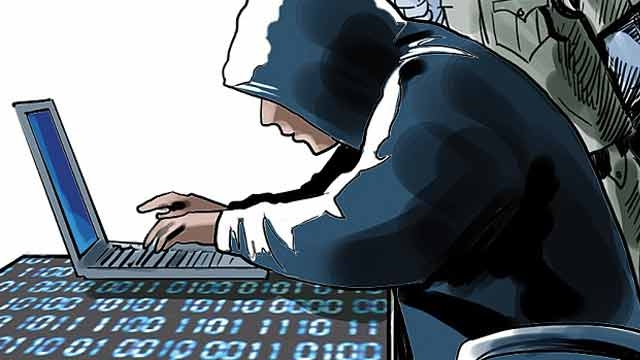
Cybercrime-as-a-service a growing threat to India: Experts
In the past few years, India has witnessed a series of hacks and other cybercrimes, especially by those claiming allegiance to Pakistan. Around 56% of the cases from January 2013 to May 2016 have been those of website defacement, which experts put in the harmless category, something which even amateurs can carry out.
However, pointing to an increasing number of network scanning/probing cases — the first step towards detecting vulnerability in systems so that sensitive data can be stolen — experts say India should not be lax, especially since it aims to turn into a cashless economy.
Also, the number of malware propagation cases and virus/malicious codes being inserted indicate the increasing prevalence of CAAS. According to data from the ministry of home affairs (MHA) and the Indian Computer Emergency Response Team (CERT-In), there were 1.57 lakh cybercrimes in the said period — 87,412 were cases of website defacement, including the hacking of the NSG website on Sunday.
But the 6.7% (10,454) cases of network probing/scanning, 8.5% (13,364) of website intrusion and malware propagation and 17.2% of virus or malicious codes insertions (see box), point to various tools that are offered by hackers for a price, say experts.
Cybercrime expert and Supreme Court advocate Pavan Duggal said: “The figures from the government, though only representative, confirm the ground reality. The security concerns need to be addressed on a war footing. In India, CAAS came to the forefront in 2015, but the lack of awareness among probing agencies means there is no specific classification.”
“Last year, I remember a case where a known terror group had sought hackers and many Indians had joined the group. Our police don’t categorize these as CAAS cases and book them under various sections. While we don’t have the correct figure, I am sure CAAS has increased in the past one year,” he added.
While no professional study has been conducted in India, according to a CIO insight report, 2016 saw a global spike in CAAS. “There has been a seismic shift in the ransomware threat, expanding from a few actors pulling off limited, smaller-dollar heists targeting consumers to industrial-scale, big-money attacks on all sizes and manner of organizations, including major enterprises,” the report said quoting Rod Rasmussen, vice-president.
Cyber expert Mirza Faizan Asad explained: “Network probing is people looking for vulnerabilities in systems which will eventually be breached to steal data. Amateurs don’t do it; these are professionals. Also, malware propagation and web intrusion are indicators of hired tools if not services”.
While hiring of hackers from other countries is one thing, many Indians are being provided ethical hacking skills by trainers, which both Duggal and Faizan say is a bigger concern. “There are such institutes in every major city. They are not regulated, charge between Rs 10,000 and Rs 40,000 for certificates and promise jobs which don’t actually exist. Armed with the required skills and with no strong law in place, the candidates may stray,” Duggal said.
Faizan said there are at least 25-30 such training centres in Bengaluru alone. There are many in Pune too, he said.
WHAT IS IT
Cybercrime-as-a-service (CAAS) refers to organized crime rings offering services like on-demand distributed denial-of-service (DDos) attacks and bulletproof hosting to support malware attacks among other things. The criminals are are gaining a better understanding of product positioning, and with whom they need to collaborate more effectively.
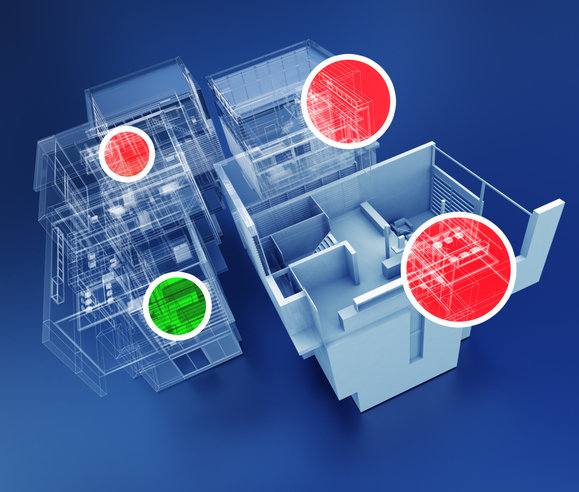
Cops to increasingly use digital footprints from IoT devices for investigations
The police are being trained to look for “digital footprints” – IoT gadgets that “track or record activities” which might prove or disprove alibis and witness statements as well as record what occurred during a murder victim’s final moments.
Cops will be relying on evidence from smart devices which spy on you – such as internet connected refrigerators, light bulbs, washing machines, vacuum cleaners, coffee makers and voice-controlled robotic assistants.
Stokes explained:
“Wireless cameras within a device such as the fridge may record the movement of suspects and owners. Doorbells that connect directly to apps on a user’s phone can show who has rung the door and the owner or others may then remotely, if they choose to, give controlled access to the premises while away from the property. All these leave a log and a trace of activity.”
Think about that while perusing products on display at CES 2017 as this has the potential to go much further than cops tapping into smart fridges and doorbells. For example, a robotic vacuum cleaner such as Unibot, which will be shown off at CES 2017, comes equipped with a security camera so it can send owners pictures and videos in real time in case it detects “unusual signs in its peripheral vision.”
All manner of smart items meant to provide convenience could also potentially be used to narc on you – used by the police to gather evidence. Some folks won’t be bothered by that since they willingly carry a smart phone which can double as a surveillance device; phones are frequently targeted by law enforcement during investigations.
Millions of people already wear wearables, but in the future, even a person’s clothes will be able to provide location data. There are already some smart clothes, such as “vibrating” jeans, which connect to a smart phone and vibrate on one side or the other in order to give GPS map directions without the user needing to whip out her phone.
A self-driving car, for example, would have location logs, but hopefully couldn’t be used against riders such as by locking the doors until police arrived to collect the person inside.
While most people don’t yet have a smart refrigerator, many do have smart TVs and most smart TVs include a camera and microphone. Voice control assistants such as Amazon’s Echo and Google Home, are quickly gaining popularity. This year at CES, there will be a plethora of products built to integrate with popular voice control assistants and even new voice control bots.
Not that all smart voice-controlled assistants correctly understand what is asked of them – as one family found out after a little boy asked their new Amazon Echo Dot to play “tickle tickle.” Alexa thought the child wanted porn and started to comply before the parents freaked out and shut her down.
The smart meter, Amazon Echo and a murder investigation
The idea that police would use data provided by IoT devices is nothing new. Police in Arkansas are pressuring Amazon to hand over data from an Echo device; the cops think some of the recorded audio data sent to the personal assistant “Alexa” may be helpful for their murder investigation. Amazon did not comply – other than sending the suspect’s purchase history.
Bentonville police detectives have already used IoT data – data from a connected water meter. The cops think the massive spike in water usage on the night of a murder may indicate the hot tub and patio had been hosed down to wash away blood evidence.
When cops start looking for “digital footprints” in IoT gadgets, it supposedly won’t be like when the cops seize a hard drive, laptop or computer for an indefinite period during an investigation. Stokes said the smart devices wouldn’t need to be seized and hauled off. Instead, investigators will use a “digital forensics kit,” which is yet to be developed, to download data and analyze microchips at the scene.

Hi-tech home appliances can help police crack murder mysteries
The "internet of things" -- in which everyday devices have network connections -- will create a new kind of crime-scene investigation, said Mark Stokes, Scotland Yard's head of digital forensics.
Detectives are being trained to spot digital footprints that might track or record activities, providing a crucial insight into the last moments of a murder victim, evidence of false alibis or inconsistencies in witness statements.
Stokes, who heads the digital, cyber and communications forensics unit at the Metropolitan police, said as household objects became "smart", with built-in microchips and processors, crime investigators would be looking for far more than fingerprints.
He said that complicated devices would soon be commonplace in many homes.
"The crime scene of tomorrow is going to be the internet of things," Stokes was quoted as saying by the Times.
"A 3,000 pounds fridge with a built-in family hub in it will soon be 400 pounds," he said.
The new Samsung Family Hub fridge has cameras that carry a live feed of its contents, as well as a screen and built-in shared calendars, music player and a connected app.
Stokes said the dates and times logged on the machine, as well as images from the camera, could prove crucial in certain cases.
"Wireless cameras within a device such as the fridge may record the movement of suspects and owners," Stokes said.
"Doorbells that connect directly to apps on a user's phone can show who has rung the door and the owner or others may then remotely, if they choose to, give controlled access to the premises while away from the property. All these leave a log and a trace of activity," he said.
Stokes said there were plans to develop a digital forensics kit allowing investigators to analyse microchips and download data at the scene, rather than taking multiple devices away.
In the US, detectives want Amazon to hand over recordings from one of its Echo voice-controlled home entertainment systems. Amazon has twice declined requests for data from the device belonging to James Andrew Bates.
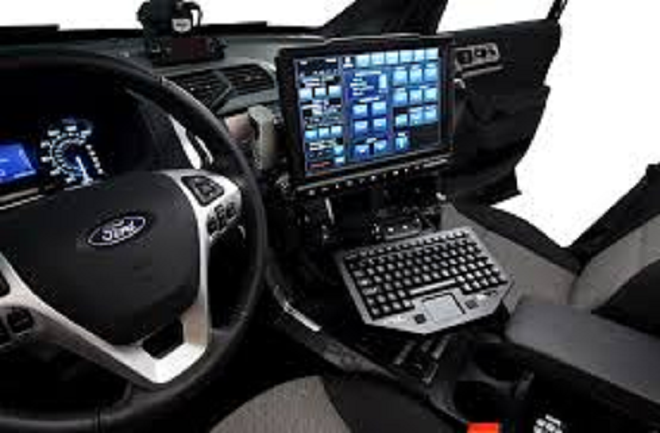
Hi-tech home appliances can help police crack murder mysteries
The "internet of things" -- in which everyday devices have network connections -- will create a new kind of crime-scene investigation, said Mark Stokes, Scotland Yard's head of digital forensics.
Detectives are being trained to spot digital footprints that might track or record activities, providing a crucial insight into the last moments of a murder victim, evidence of false alibis or inconsistencies in witness statements.
Stokes, who heads the digital, cyber and communications forensics unit at the Metropolitan police, said as household objects became "smart", with built-in microchips and processors, crime investigators would be looking for far more than fingerprints.
He said that complicated devices would soon be commonplace in many homes.
"The crime scene of tomorrow is going to be the internet of things," Stokes was quoted as saying by the Times.
"A 3,000 pounds fridge with a built-in family hub in it will soon be 400 pounds," he said.
The new Samsung Family Hub fridge has cameras that carry a live feed of its contents, as well as a screen and built-in shared calendars, music player and a connected app.
Stokes said the dates and times logged on the machine, as well as images from the camera, could prove crucial in certain cases.
"Wireless cameras within a device such as the fridge may record the movement of suspects and owners," Stokes said.
"Doorbells that connect directly to apps on a user's phone can show who has rung the door and the owner or others may then remotely, if they choose to, give controlled access to the premises while away from the property. All these leave a log and a trace of activity," he said.
Stokes said there were plans to develop a digital forensics kit allowing investigators to analyse microchips and download data at the scene, rather than taking multiple devices away.
In the US, detectives want Amazon to hand over recordings from one of its Echo voice-controlled home entertainment systems. Amazon has twice declined requests for data from the device belonging to James Andrew Bates.
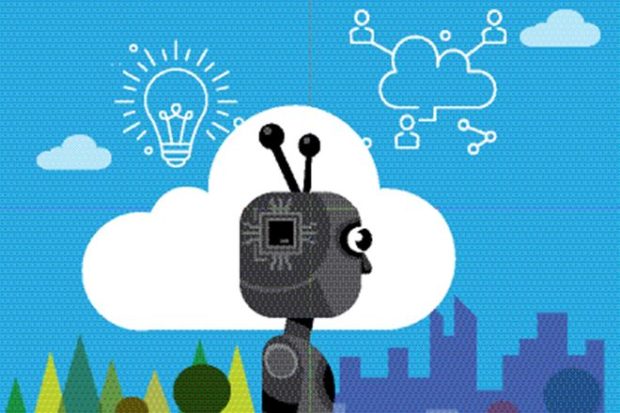
Internet of Things will find its way into manufacturing, smart cities and more; here’s why
The technology trends that will redefine the future for businesses and consumers in 2017 can be enumerated as follows:
* By harnessing the power of data, cloud computing and advanced analytics, artificial intelligence (AI) is set to fundamentally change how we interact with technology by augmenting human capabilities across apps, bots, services and infrastructure. As we move forward, democratisation of AI will fuel future innovations and empower us to solve some of society’s toughest challenges. Businesses can use AI to transform data into actionable intelligence including gaining unique consumer insights, interpreting industry trends and finding accurate outcomes to a wide variety of business problems in real-time.
* Internet of Things (IoT) will become mainstream as it finds its way into manufacturing, healthcare, smart cities, intelligent buildings, products and processes.
* Machine learning is rapidly becoming one of the most desirable technologies for consumers and businesses together. Earlier data was analysed to understand the past and the present, but machine learning reasons over the data and predict outcomes and future patterns, which further leads to new insights. Moreover, machine learning on the cloud has made it more accessible to everyone.
* Blockchain will optimise digital transformation. This technology will streamline processes to augment speedy transactions, eliminate clearing houses and resolve regulatory bottlenecks. Microsoft’s Azure Blockchain as a Service (BaaS) provides an open, hyper-scale cloud platform and an expanding ecosystem of blockchain technologies for enterprises, consortiums and governments. It will further help optimise their digital transformation journey in a cost-effective yet scalable manner across development, testing and production environments.
* Cognitive services will redefine how we interact. From mere translation of text or speech from one language to another, machine translation has moved paces ahead and is now offering services like real-time translations. Translation services will not only be restricted to language but will extend into cognitive offerings. With cognitive services, developers can easily add intelligent features such as emotion and sentiment detection, vision and speech recognition, knowledge, search and language understanding into their applications.
* Cyber security will become the prime focus for all organisations. Digital India vision, combined with opportunities of the fourth industrial revolution, demands a comprehensive security infrastructure. Cyber threats continue to evolve and attackers are gaining access to credentials and high security information, posing a threat to the legitimate user and businesses.
* Chatbots, our personalised digital assistants, will learn from user behaviour and analyse data to predict more user relevant commands. For example, ordering food to setting temperatures at home to even buying groceries.
* Virtual reality (VR) and augmented reality (AR) will find applications beyond entertainment. Technology advances and reductions in cost will mainstream VR/AR to a number of business, education and personal experiences.
I see the India Stack (the complete set of API including Aadhaar for Authentication) as an accelerator for digitising the consumer—taking advantage of the billion Aadhaar identities and the billion phones in the country. This will accelerate e-commerce, e-government services, education, healthcare and agriculture. But it will impose much stress on cyber security. Federating Identity, where the user’s credentials are stored with the identity provider, across multiple platforms will become key.
We foresee that artificial intelligence, machine learning, IoT and smart devices will play a pivotal role in designing products and services of the future. These technologies are set to become an essential part of our daily lives.
Newsletter
Sign Up for Monthly Newsletter
Recent Tweets
CONTACT US
Crux Center for Security
Research and Events (CCSRE)
3rd Floor, Tower-B, Unitech Cyber Park
Sector 39, Gurugram,122022
0124- 4207903, 05, 06
Copyright © 2016 Crux Center For Security Research And Events (CCSRE) | All Right Reserved
